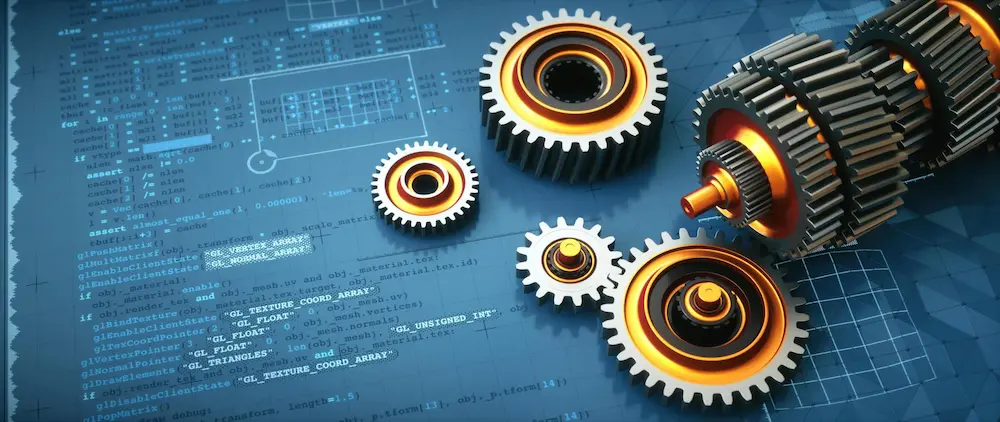In today’s fast-paced world of engineering and manufacturing. Computer-Aided Design (CAD) has become an indispensable tool. Revolutionizing the way products conceptualized, designed, and manufactured. This article explores the profound impact of CAD drafting services on the engineering and manufacturing industries, from increased efficiency to enhanced innovation.
Page Contents
CAD Designing
CAD, or Computer-Aided Design, refers to the use of computer software to create precise and detailed technical drawings and models. It has emerged as a cornerstone technology in engineering and manufacturing, offering a myriad of benefits over traditional drafting methods.
Evolution of CAD in Engineering and Manufacturing
Gone are the days of manual drafting on paper. CAD technology has ushered in a new era of design sophistication and efficiency. From rudimentary 2D drafting software to complex 3D modeling platforms, the evolution of CAD has transformed the way engineers and designers approach their work.
Advantages of CAD Designing
CAD offers a plethora of advantages over traditional drafting methods. One of the most significant benefits is the enhanced precision and accuracy it provides. With CAD software, engineers can create intricate designs with pinpoint accuracy, reducing the margin for error. Additionally, CAD enables streamlined design iteration and modification, allowing designers to quickly refine their concepts and address any issues that may arise. Moreover, CAD facilitates collaboration and communication among team members. Designs can easily shared and reviewed in real-time.
Applications of CAD in Engineering
In the field of engineering, CAD used across various disciplines. Including civil, mechanical, and electrical engineering. It plays a crucial role in structural design and analysis, enabling engineers to model and simulate complex structures with ease. Furthermore, CAD is integral to mechanical engineering and product development, allowing designers to create detailed 3D models of components and assemblies.
“Applications of CAD in Engineering” refers to the various ways. In which Computer-Aided Design (CAD) technology utilized within the field of engineering. CAD software allows engineers to create detailed digital representations of products, components, and structures, providing a platform for design, analysis, and visualization. Here are some specific applications of CAD in engineering:
- Structural Design and Analysis: CAD Designing extensively used in structural engineering. To design and analyze buildings, bridges, and other infrastructure projects. Engineers can create 3D models of structures, simulate loads and stresses, and optimize designs for strength and stability. CAD software also enables the generation of detailed drawings and specifications for construction.
- Mechanical Engineering: In mechanical engineering, CAD designing employed for designing machinery, equipment, and mechanical components. Engineers can create precise 3D models of parts and assemblies, perform simulations to evaluate performance and functionality, and generate manufacturing drawings for production. CAD software facilitates the integration of mechanical components into larger systems and ensures compatibility and efficiency.
- Electrical Engineering: CAD designing used in electrical engineering for designing circuits, wiring diagrams, and electronic components. Engineers can create schematic diagrams to visualize the layout of electrical systems, simulate circuit behavior to predict performance, and generate wiring diagrams for installation. CAD software assists in optimizing the placement of components and ensuring compliance with electrical codes and standards.

Applications of CAD in Manufacturing
CAD is equally essential in the manufacturing sector, where it forms the foundation of computer-aided manufacturing (CAM). By integrating CAD with CAM software, manufacturers can automate the production process and optimize efficiency. Additionally, CAD plays a key role in CNC machining, enabling manufacturers to program precision machining operations with minimal human intervention.
“Applications of CAD in Manufacturing” refer to the diverse ways. In which Computer-Aided Design (CAD) technology utilized within the manufacturing industry. CAD software enables manufacturers to create detailed digital models of products, parts, and assemblies, facilitating the design, analysis, and production of physical goods. Here are some specific applications of CAD in manufacturing:
- Product Design and Development: CAD is extensively used in the initial stages of product design and development. Engineers and designers can create precise 3D models of products, incorporating design elements, dimensions, and materials specifications. CAD software allows for virtual prototyping and iterative design, enabling manufacturers to refine concepts and optimize product designs before production.
- Tooling and Mold Design: CAD is essential for designing tooling and molds used in manufacturing processes such as injection molding, casting, and stamping. Engineers can create detailed 3D models of molds and dies, ensuring precise fit and functionality. CAD software facilitates the optimization of tooling designs for efficiency, durability, and manufacturability, reducing lead times and costs associated with tooling production.
- Computer-Aided Manufacturing (CAM): CAD software is integrated with CAM systems to automate manufacturing processes and generate toolpaths for machining operations. Manufacturers can use CAD/CAM software to convert design models into instructions for CNC (Computer Numerical Control) machines, such as mills and lathes. CAD/CAM integration streamlines the production process, improves accuracy, and reduces manual intervention in machining operations.
Challenges and Limitations of CAD
Despite its many advantages, CAD also presents certain challenges and limitations. One of the primary hurdles is the initial investment required to adopt CAD technology, including software licensing costs and hardware upgrades. Moreover, mastering CAD software requires a significant learning curve, necessitating comprehensive training and education for users.
Future Trends in CAD
Looking ahead, the future of CAD is brimming with potential. Emerging technologies such as virtual reality (VR) and augmented reality (AR) are poised to revolutionize the CAD landscape, offering new avenues for design visualization and collaboration. Furthermore, there is a growing emphasis on sustainability and environmental impact in CAD design, with developers exploring ways to minimize waste and optimize resource utilization.
Quality Control and Inspection
CAD models are utilized in quality control and inspection processes to verify product dimensions and tolerances. Manufacturers can compare physical parts or assemblies against CAD models using coordinate measuring machines (CMMs) or optical inspection systems. CAD-based inspection ensures that manufactured parts meet design specifications and quality standards.
Product Documentation and Manufacturing Drawings
CAD software is used to generate detailed manufacturing drawings and documentation required for production. Engineers can create dimensioned drawings, assembly instructions, and bill of materials (BOM) directly from CAD models. CAD software ensures consistency and accuracy in documentation, reducing errors and discrepancies during manufacturing.

Conclusion
In conclusion, the impact of CAD designing on the engineering and manufacturing industries cannot be overstated. From increased efficiency to enhanced innovation, CAD has reshaped the way products are conceived, designed, and manufactured. As technology continues to evolve, the role of CAD in driving progress and innovation in engineering and manufacturing will only grow stronger.
FAQs
1. How does CAD improve design efficiency?
CAD enables engineers and designers to create precise and detailed technical drawings and models, reducing the margin for error and streamlining the design iteration process.
2. What are some common applications of CAD in engineering?
CAD is used in various engineering disciplines, including structural design and analysis, mechanical engineering, and electrical engineering, among others.
3. How does CAD benefit the manufacturing industry?
CAD plays a crucial role in computer-aided manufacturing (CAM), enabling manufacturers to automate production processes and optimize efficiency. It also facilitates CNC machining and precision manufacturing operations.
4. What are the challenges of adopting CAD technology?
The initial investment required to adopt CAD technology, including software licensing costs and hardware upgrades, can be a significant hurdle for some organizations. Additionally, mastering CAD software requires comprehensive training and education.
5. What does the future hold for CAD?
The future of CAD is characterized by emerging technologies such as virtual reality (VR) and augmented reality (AR), as well as a growing focus on sustainability and environmental impact. These trends are expected to reshape the CAD landscape and drive further innovation in the field.




